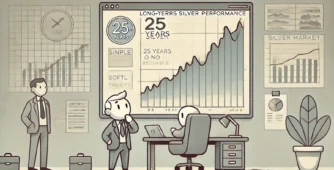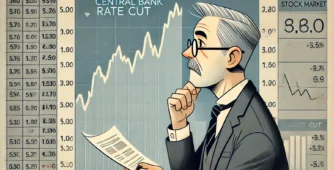Gold: Overpriced or Still Undervalued?
There’s an ongoing debate about whether gold is overpriced or poised for further growth. Many analysts point to historical charts, drawing parallels to patterns from 1978, which suggest potential resistance. But the bigger question remains: will this trend halt, or does gold have room to run? To answer this, we must delve into historical price trends and compare them with broader economic indicators.

Understanding Gold’s Historical Price Movement
Since 1980, gold’s price has risen by only 226%. At first glance, this may seem significant. However, when we compare it to other economic indicators, the growth is modest. During the same period, the S&P 500 surged 51 times, and global debt exploded by 34,000%. The monetary base—the total amount of new currency generated by central banks, including digital and physical money—has also grown astronomically.
Even in more recent times, the disparity is evident. Over the last 13 years, the monetary base has increased by 115%, and federal debt has climbed by 142%. Yet, gold prices have risen by only 42% during this period. Clearly, gold’s performance has lagged behind the massive currency expansion and asset price inflation seen in other areas.
The Case for Gold’s Repricing
Gold is often seen as a hedge against inflation and currency debasement. As central banks continue to print money to sustain economies, the monetary base keeps expanding. This expansion creates a strong case for gold prices to rise further, aligning more closely with the broader economic environment.
Countries like India, China, and Russia have been steadily accumulating gold, recognizing its long-term value as a store of wealth. These purchases are part of a larger trend among central banks to diversify reserves and reduce reliance on fiat currencies. This global demand further supports the notion that gold may be undervalued relative to its potential.
Why Gold Is Not Overpriced Today
Some intermediate corrections in gold prices may occur, as markets naturally ebb and flow. However, when viewed in the context of decades of monetary expansion, rising debt, and global economic uncertainty, gold still has significant room for growth. Its price does not fully reflect the scale of currency creation and the devaluation of fiat money over time.
Moreover, central banks hold large inventories of gold valued at outdated levels, often around $35 per ounce. If these valuations are adjusted to reflect current market prices or higher, it could lead to a dramatic repricing of gold and a substantial increase in its value.
Potential for Future Growth
The prospect of gold reaching $4,000 or even $10,000 per ounce may seem ambitious, but it aligns with the underlying fundamentals. As the monetary base continues to rise and countries adjust their gold valuations, the metal could see significant upward movement. This repricing would not only reflect its historical role as a monetary anchor but also its modern-day importance in a world of increasing financial uncertainty.
WeekendInvesting launches – PortfolioMomentum Report
Momentum Score: See what percentage of your portfolio is in high vs. low momentum stocks, giving you a snapshot of its performance and health.
Weightage Skew: Discover if certain stocks are dominating your portfolio, affecting its performance and risk balance.
Why it matters
Weak momentum stocks can limit your gains, while high momentum stocks improve capital allocation, enhancing your chances of superior performance.
Disclaimers and disclosures : https://tinyurl.com/2763eyaz
If you have any questions, please write to support@weekendinvesting.com










